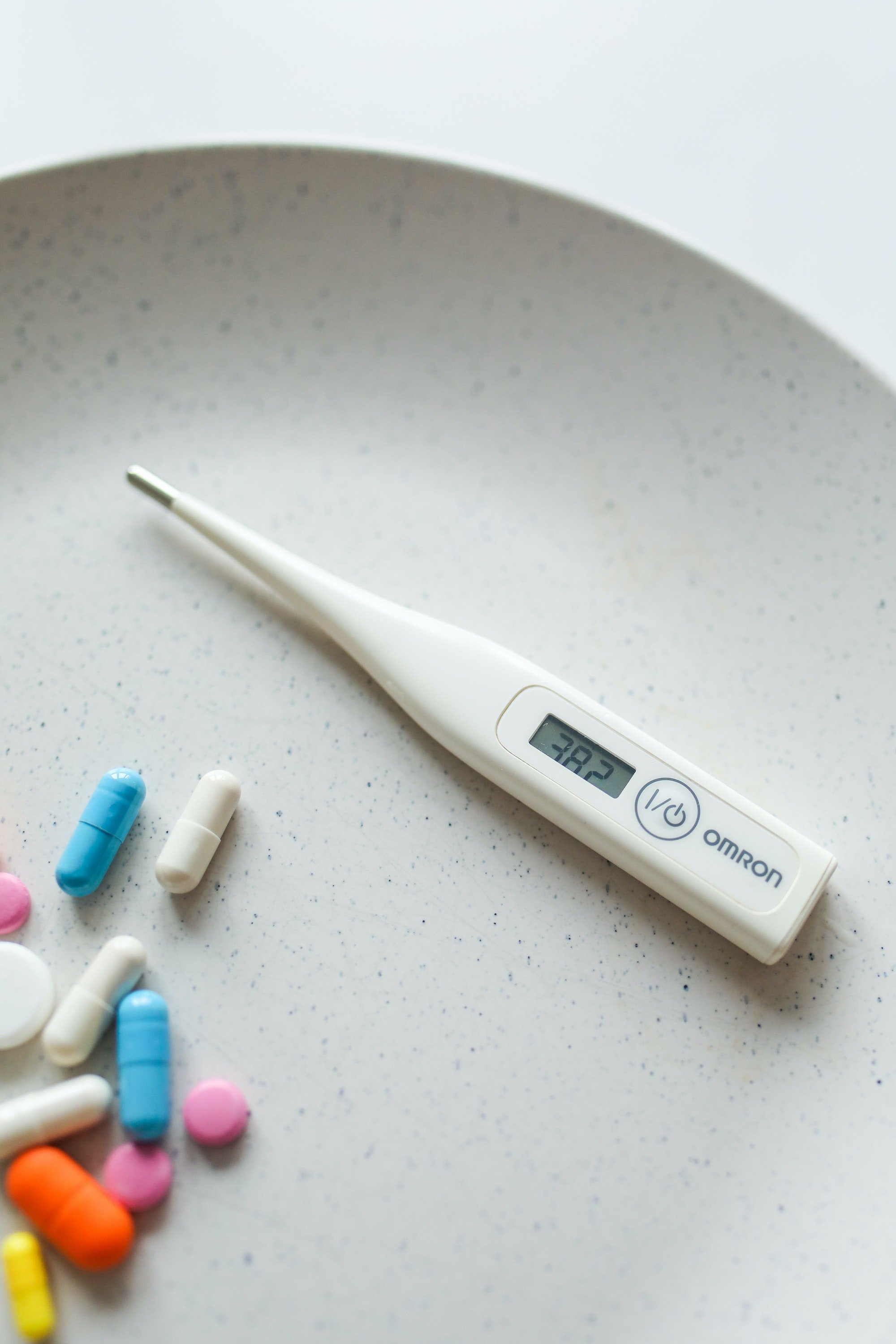
The Blog
“Forgive yourself for not knowing what you did not know before you learned it”
Written by our team of naturopathic doctors, our blog is designed to help support your fertility and reproductive health.

Dr. Sumner’s Maternity Leave: A Letter to My Patients
It is with hope, excitement, and nervousness that I announce my pregnancy and short maternity leave.

How do you know if you have PCOS?
PCOS cannot just be diagnosed on an ultrasound. Contrary to the name “polycystic ovarian syndrome” you do NOT need to have cystic ovaries to be diagnosed with PCOS. In fact, cystic ovaries (with a high ovarian reserve) are a sign of young, healthy ovaries!

The Implantation Truffle Recipe
Written by Dr. Caleigh Sumner, ND
My most requested recipe is the “implantation truffle”. I love baking and always bake with chocolate. This recipe doesn’t even actually require baking, it’s easy!

Using Basal Body Temperature Tracking
Written by Dr. Caleigh Sumner, ND
In extremely simplistic terms, the first half of your cycle- the follicular phase– is dominated by estrogen. Once you have ovulated and are in the second half of your cycle- the luteal phase– it is dominated by progesterone. What is unique about these 2 hormones is that they have different thermogenic effects, this means they change your body temperature. If you track your body temperature daily you can chart your hormone patterns and figure out what’s going on in your unique body.

My Absolutely Essential, Non-Negotiable Birth Prep Strategy: Acupuncture
Written by Dr. Caleigh Sumner, ND
Once you have reached the 35th week of pregnancy you are officially ready to start preparing your body for labour. These natural strategies do not induce early term labour, but rather prepare your body for an efficient and successful birth. If you are anxious about the birth process, and I’m not sure who isn’t, it’s also helpful to have someone to talk with and provide education on what to expect to ease your anxiety. If you have not been seeing a naturopathic doctor throughout your pregnancy, I highly recommend seeing one to prepare for birth. It is never too late!

The Blood Test to Diagnose Endometriosis
Written by Dr. Caleigh Sumner, ND
Endometriosis is extremely difficult to diagnose, it takes an average of 10 years to be found effectively. Most people go unnoticed, and even ignored, for their symptoms.

Vitamin D Supplementation May be the Easiest Way to Prevent Miscarriage
Written by Dr. Caleigh Sumner, ND
This updated 2018 study found a fourfold risk of pregnancy loss with low vitamin D status!
In fact, every one-degree of vitamin D deficiency was found to be associated with a 1% increase in risk of miscarriage.

What does AMH (ovarian reserve) have to do with natural fertility success? Not a whole lot
Written by Dr. Caleigh Sumner, ND
AMH stands for “Anti-Mullerian Hormone”, which is a hormone produced by developing follicles (aka eggs). AMH is used as a measure of ovarian reserve, as it is secreted by the follicles in the ovaries. The idea is that the more follicles you have, the higher your AMH value will be and the higher your fertile potential. The more eggs you have, the later you’ll go into menopause. A low value means a low number of eggs remaining, which means less fertile potential.

Your Guide to a More Comfortable Egg Retrieval
Written by Dr. Caleigh Sumner, ND
Did you know that the egg retrieval procedure is considered minor surgery? No to worry though, you’ll be sedated! (Which means don’t go alone, you’ll need someone to drive you home.) This blog is filled with tips and tricks to get you through the procedure with knowledge and ease.

How The Right Diagnosis Can Prevent Miscarriage
Written by Dr. Caleigh Sumner, ND
If I had to choose an area of fertility medicine that is most near and dear to me, it’s working with pregnancy loss. It is the area where I focus most of my time and expertise. There’s just so much that we don’t know about what it takes to carry a baby to term, and yet there IS so much we do know and the research is ever developing. Rest assured, this article isn’t about what we can’t control, but rather what we can. With the right testing and diagnosis, we can prevent miscarriage.

The Top 10 Questions to Ask Before Starting IVF
Written by Dr. Caleigh Sumner, ND
IVF is a big step, physically and financially, and you likely have questions before you commit but you just don’t know what to ask. Of course, how do you know what you don’t know?! The purpose of this blog is to inform you about the IVF process and provide you with some preliminary questions to ask your Reproductive Endocrinologist (RE). It’s important that you feel empowered and in-control when it comes to the decision of IVF. Don’t be afraid to ask questions and advocate for yourself, you always deserve to be in the know!

The 10 Foods To Eat During the 2-Week Wait
Written by Dr. Caleigh Sumner, ND
Through the countless appointments, medications, and procedures! Now all there’s left to do is wait, and maybe wait a little more. These two weeks are a time for you to do absolutely nothing: love yourself, hug yourself, and reflect on how you’re stronger than was ever thought humanly possible!

5 Natural Ways to Increase Uterine Lining Thickness and Prepare for an Embryo Transfer
Written by Dr. Caleigh Sumner, ND
Uterine (or endometrial) lining thickness is a useful predictor of embryo implantation and miscarriage prevention. It is measured via ultrasound during cycle monitoring, IUI, IVF, and frozen embryo transfers. A thin lining can halt the entire fertility process, and not seeing any growth in thickness, despite medical efforts, can be really frustrating.

What Your Semen Analysis Really Means and How to Get the Results You Want
Written by Dr. Caleigh Sumner, ND
The World Health Organization has the very influential job of determining the reference ranges for semen analysis. These reference ranges were overhauled in 2010 from the previous 1999 ranges, which were much higher. There is no doubt that sperm quality has declined over the past 50 years. Some may argue that it’s due to emerging standards of scientific evidence, but in my opinion the strongest evidence is the western lifestyle: poor diet, toxic exposure, xenoestrogens, electromagnetic frequencies, obesity, sedentary habits, the list is endless.

This is What Infertility Looked Like 35 Years Ago
Written by Dr. Caleigh Sumner, ND
In honour of Canadian Infertility Awareness week, I sat down with my parents and asked them what infertility looked like over thirty years ago. You see: I am the very happy ending of a ten-year struggle with infertility. Just as you’ll one day share your journey with your baby to be, my parents shared their overwhelming journey with me. They never would have imagined that their daughter would be telling their fertility story, yet here I am sharing it with you!

Confessions of a Tap Water Drinker: How To Combat Environmental Estrogens Without Losing Your Mind
Written by Dr. Caleigh Sumner, ND
There are so many things you can do to reduce your chemical load and you don’t have to turn your life upside down to do them. I’m here to tell you that even small changes make a BIG difference when they all add up.

The Top 10 Hormones Worth Testing in Blood Work and The EXACT Results You Want to See
Written by Dr. Caleigh Sumner, ND
The biggest pitfall of serum (blood) hormone testing is that the reference ranges are MASSIVE. Which means it is highly unlikely that your results will be deemed “abnormal” even though you know you have a hormonal imbalance. So that’s what this blog is for; I’m going to break it all down for you and discuss what the results mean and the REAL range you’re looking for.

Can coenzyme Q10 supplementation make your eggs act a little bit younger?!
Written by Dr. Caleigh Sumner, ND
Even though we’re stuck with a certain number of eggs, we can influence the quality of our eggs because they are arrested in a stage of cell division called meiosis I. This means they are not mature and they have not completed cell division. It’s the maturation process that we can influence!

Acupuncture and My Heart: A Personal Story
Written by Dr. Caleigh Sumner, ND
16 years ago I started experiencing abnormal heart palpitations. After a few years of misdiagnoses, I was told I had paroxysmal supraventricular tachycardia (PSVT for short). PSVT is just a fancy term for having a really, really fast heart rate due to extra electrical fibers in the heart interfering with the normal electrical circuit.

Have you been told you need to practice some “self-care”? Not sure what that means? Try it here!
Written by Dr. Caleigh Sumner, ND
“Self-care” can seem overwhelming can’t it? Who has time for self-care anyways? Why is everyone telling me to relax? Taking care of yourself is not about expensive massages and time consuming seminars and obsession with healthy everything, it’s about finding ways to nourish yourself. Check out these 8 simple options to care for yourself in a simple, cost effective, and easy way! Maybe one of them will resonate with you, and if it doesn’t, that’s okay too.
“Forgive yourself for not knowing what you didn’t know before you learned it.”
- MAYA ANGELOU

